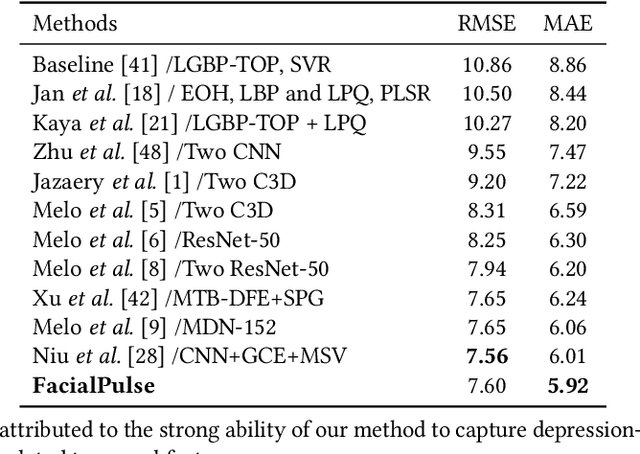Jinyang Huang
Optimizing Federated Graph Learning with Inherent Structural Knowledge and Dual-Densely Connected GNNs
Aug 21, 2024Abstract:Federated Graph Learning (FGL) is an emerging technology that enables clients to collaboratively train powerful Graph Neural Networks (GNNs) in a distributed manner without exposing their private data. Nevertheless, FGL still faces the challenge of the severe non-Independent and Identically Distributed (non-IID) nature of graphs, which possess diverse node and edge structures, especially across varied domains. Thus, exploring the knowledge inherent in these structures becomes significantly crucial. Existing methods, however, either overlook the inherent structural knowledge in graph data or capture it at the cost of significantly increased resource demands (e.g., FLOPs and communication bandwidth), which can be detrimental to distributed paradigms. Inspired by this, we propose FedDense, a novel FGL framework that optimizes the utilization efficiency of inherent structural knowledge. To better acquire knowledge of diverse and underexploited structures, FedDense first explicitly encodes the structural knowledge inherent within graph data itself alongside node features. Besides, FedDense introduces a Dual-Densely Connected (DDC) GNN architecture that exploits the multi-scale (i.e., one-hop to multi-hop) feature and structure insights embedded in the aggregated feature maps at each layer. In addition to the exploitation of inherent structures, we consider resource limitations in FGL, devising exceedingly narrow layers atop the DDC architecture and adopting a selective parameter sharing strategy to reduce resource costs substantially. We conduct extensive experiments using 15 datasets across 4 different domains, demonstrating that FedDense consistently surpasses baselines by a large margin in training performance, while demanding minimal resources.
FacialPulse: An Efficient RNN-based Depression Detection via Temporal Facial Landmarks
Aug 07, 2024



Abstract:Depression is a prevalent mental health disorder that significantly impacts individuals' lives and well-being. Early detection and intervention are crucial for effective treatment and management of depression. Recently, there are many end-to-end deep learning methods leveraging the facial expression features for automatic depression detection. However, most current methods overlook the temporal dynamics of facial expressions. Although very recent 3DCNN methods remedy this gap, they introduce more computational cost due to the selection of CNN-based backbones and redundant facial features. To address the above limitations, by considering the timing correlation of facial expressions, we propose a novel framework called FacialPulse, which recognizes depression with high accuracy and speed. By harnessing the bidirectional nature and proficiently addressing long-term dependencies, the Facial Motion Modeling Module (FMMM) is designed in FacialPulse to fully capture temporal features. Since the proposed FMMM has parallel processing capabilities and has the gate mechanism to mitigate gradient vanishing, this module can also significantly boost the training speed. Besides, to effectively use facial landmarks to replace original images to decrease information redundancy, a Facial Landmark Calibration Module (FLCM) is designed to eliminate facial landmark errors to further improve recognition accuracy. Extensive experiments on the AVEC2014 dataset and MMDA dataset (a depression dataset) demonstrate the superiority of FacialPulse on recognition accuracy and speed, with the average MAE (Mean Absolute Error) decreased by 21% compared to baselines, and the recognition speed increased by 100% compared to state-of-the-art methods. Codes are released at https://github.com/volatileee/FacialPulse.
Counterfactual Intervention Feature Transfer for Visible-Infrared Person Re-identification
Aug 01, 2022



Abstract:Graph-based models have achieved great success in person re-identification tasks recently, which compute the graph topology structure (affinities) among different people first and then pass the information across them to achieve stronger features. But we find existing graph-based methods in the visible-infrared person re-identification task (VI-ReID) suffer from bad generalization because of two issues: 1) train-test modality balance gap, which is a property of VI-ReID task. The number of two modalities data are balanced in the training stage, but extremely unbalanced in inference, causing the low generalization of graph-based VI-ReID methods. 2) sub-optimal topology structure caused by the end-to-end learning manner to the graph module. We analyze that the well-trained input features weaken the learning of graph topology, making it not generalized enough during the inference process. In this paper, we propose a Counterfactual Intervention Feature Transfer (CIFT) method to tackle these problems. Specifically, a Homogeneous and Heterogeneous Feature Transfer (H2FT) is designed to reduce the train-test modality balance gap by two independent types of well-designed graph modules and an unbalanced scenario simulation. Besides, a Counterfactual Relation Intervention (CRI) is proposed to utilize the counterfactual intervention and causal effect tools to highlight the role of topology structure in the whole training process, which makes the graph topology structure more reliable. Extensive experiments on standard VI-ReID benchmarks demonstrate that CIFT outperforms the state-of-the-art methods under various settings.
 Add to Chrome
Add to Chrome Add to Firefox
Add to Firefox Add to Edge
Add to Edge